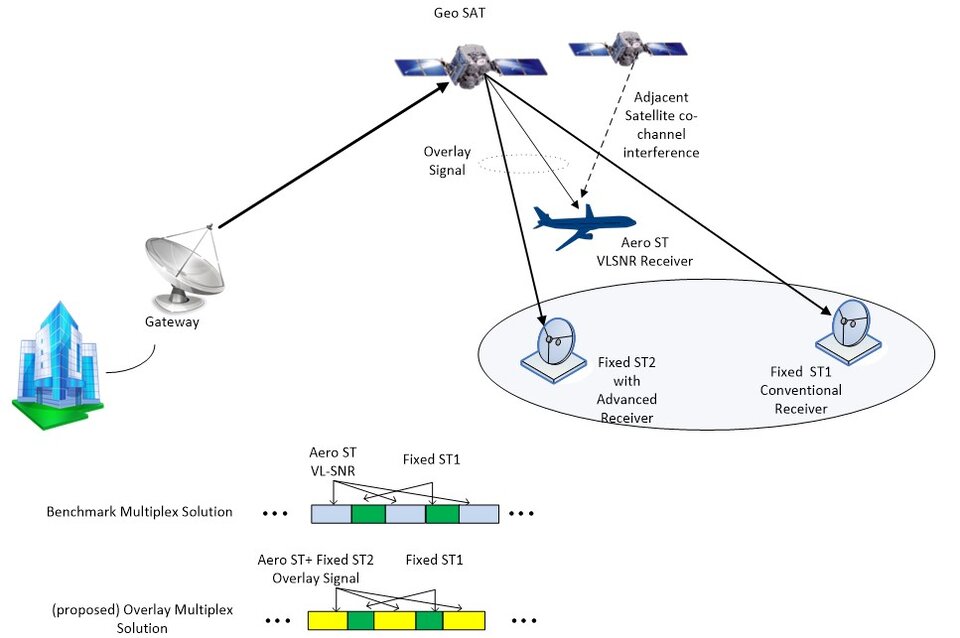Signal Overlay Design and Detection for Satellite Communication Channels
| 701 - Abstract: |
| In broadband satellite communications, different methods to improve the spectral efficiency of multi-user satellite systems with two or more co-existing classes of terminals with highly imbalanced link efficiencies exist. A state-of-the art solution is multiplexing, which can cause delay jitter. In the following, an invention redesigning the signal overlay approach will be introduced. ESA is looking for partners who would be interested in licensing and implementing this design. |
Description:
The European Space Agency proposes a practical constellation design method to create signal overlay for satellite channel, allowing simultaneous transmission of two signals intended for two users in a peak limited satellite channel. It also proposes a design for the signal constellation mapping that allows the combination of two coded modulation signals compatible in format with the DVB-S2X standard, and the design of a detection scheme that allows the detection of both overlay signals. The latter achieves a gain of the overlay signal, particularly, for a satellite channel with average power as well as peak power constraints.
The performance gain of overlay signaling is significant when the overlay signals are intended for users with a large imbalance in their link efficiencies. This is important in the system applications where two distinct classes of user terminals are deployed such as fixed satellite services in coexistence with aeronautical or vehicular communications.
The use of the proposed technique is particularly relevant to the new DVB-S2X air interface specification that expands the range of signal to noise operation from -10 dB to +20 dB.
Figure 1 illustrates an example of implementation of the invention where a Ku-band transponder is deployed to serve two classes of users:
1. Aeronautical user terminals with a constraint on the antenna size (effective antenna size 30 cm)
2. Fixed satellite user terminals with 1.2 meters antenna size
Innovations and advantages:
- Enables overlay transmission and capability of receiving two or more signals of different strengths over the same satellite link.
- Improves capacity in comparison to state-of-the art time sharing method.
- Avoids delay jitter and bursty transmission.
- Makes use of satellite resources more efficient.
- Maintains backward compatibility with the existing satellite services
- Particularly useful for the growth of the satellite aeronautical or vehicular communications market
Domain of application:
The proposed solution is designed for satellite channels. Potential applications are:
- Satellite communication (satellite communication standard)
- Aeronautical communication
- Vehicular communication
- Terrestrial point-to-multi-point communications with near-far scenario
- Green cellular networks















 Germany
Germany
 Austria
Austria
 Belgium
Belgium
 Denmark
Denmark
 Spain
Spain
 Estonia
Estonia
 Finland
Finland
 France
France
 Greece
Greece
 Hungary
Hungary
 Ireland
Ireland
 Italy
Italy
 Luxembourg
Luxembourg
 Norway
Norway
 The Netherlands
The Netherlands
 Poland
Poland
 Portugal
Portugal
 Czechia
Czechia
 Romania
Romania
 United Kingdom
United Kingdom
 Slovenia
Slovenia
 Sweden
Sweden
 Switzerland
Switzerland


























